Seagate Enterprise NAS HDD 6 TB Review
by Ganesh T S on December 10, 2014 8:00 AM EST- Posted in
- NAS
- Storage
- Seagate
- HDDs
- Enterprise
RAID-5 Benchmarking - Miscellaneous Aspects
Consumers are rightly worried about RAID rebuilds and the scope for drive failures during that process. As one of our evaluation aspects, we randomly yanked out a disk during operation and cleaned it up for rebuild. We recorded the resync duration (time taken to rebuild a 3-disk RAID-5 volume when one of the disks needs to be replaced) as well as the average power consumption during that process. The two aspects, considered together, give an idea of the efficiency of the hard drive. The graph below presents the total energy consumption (Resync Power Consumption (W) X Resync Duration (s)) for the resync.

While the energy consumption aspect provides a consolidated view of the various factors, it is still worthwhile to look at the power consumption and resync duration numbers separately. The table below provides the raw information behind the above graph. The numbers are very similar to the Enterprise Capacity v4, with a slight edge for the Enterprise NAS HDD.
| RAID-5 Resync Power Consumption & Duration | ||
| Drive | Power (W) | Duration (s) |
| Seagate Enterprise NAS HDD | 101.91 | 37284 |
| WD Red | 90.48 | 52072 |
| HGST Ultrastar He6 | 95.36 | 45260 |
| Seagate Enterprise Capacity v4 | 105.42 | 37462 |
We also measured power consumption during the last stage of our multi-client test. With 25 different clients simultaneously stressing the NAS with different types of workloads, we recorded the power consumption at the wall for the NAS as a whole. The various numbers are presented in the graphs below.
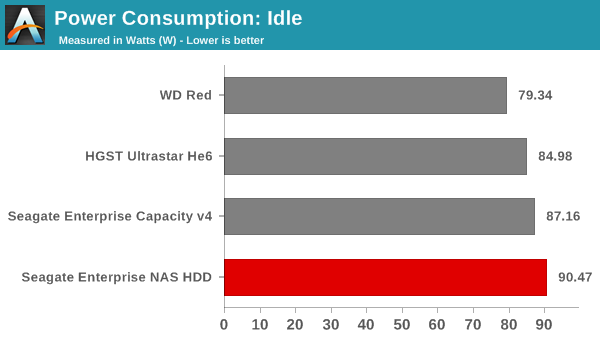
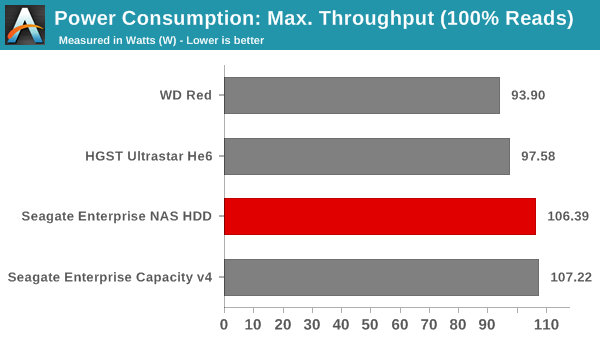
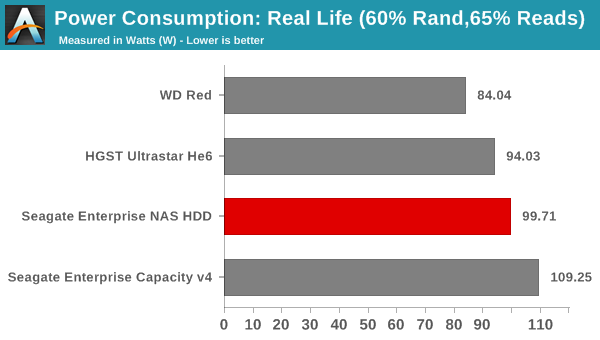
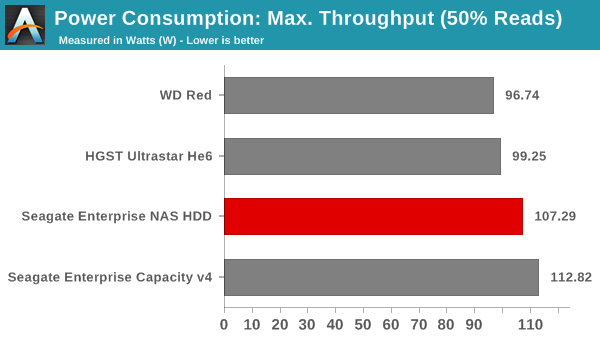
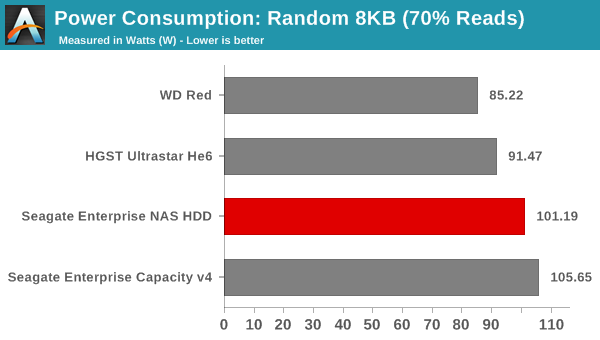
As expected, the units providing better performance have higher power consumption numbers. Workload numbers closely track the rebuild power consumption. The HGST Ultrastar He6, while providing equivalent performance, manages to keep the power consumption low because of the sealed Helium-filled environment for the platters. The Seagate Enterprise Capacity v4 and Enterprise NAS HDD are traditional hard drives that are able to achieve the capacity points using platters with higher storage density (six platters with 1TB/platter).










51 Comments
View All Comments
intiims - Tuesday, December 30, 2014 - link
Great topic, usefull information.If You want to Read more about External Hard Drives visit: http://www.hddmag.com/